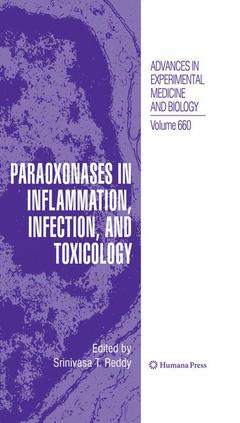Description
Paraoxonases in Inflammation, Infection, and Toxicology, 2010
Advances in Experimental Medicine and Biology Series, Vol. 660
Coordinator: Reddy Srinivasa T.
Language: English
Subjects for Paraoxonases in Inflammation, Infection, and Toxicology:
Keywords
Macrophages; Sepsis; biochemistry; biology; pesticide; proteins; regulation
212 p. · 15.5x23.5 cm · Paperback
212 p. · 15.5x23.5 cm · Hardback
Description
/li>Contents
/li>Comment
/li>
The pivotal role of the Paraoxonases (PON) family in a variety of inflammatory diseases, e.g. atherosclerosis, in preventing the toxicity of organophosphorus insecticides and nerve agents and a variety of other compounds has made them an interesting target for both clinicians and scientists alike. Research into the paraoxonase (PON) family of enzymes (PON1, PON2 and PON3) has increased exponentially over the last five years especially following the initiation of paraoxonase conferences.
The objectives of the 3rd ICP remains the same as the previous two conferences: to disseminate the latest aspects of research into the genetics, biochemistry, structural biology, regulation of PONs and their roles in inflammatory diseases e.g. atherosclerosis with expert lectures from 20 invited plenary lecturers and another 30-40 short and poster presentations from young investigators.
The conference organizers anticipate a global attendance at the conference of between 150- 200 persons. Particular aspects of this conference will include the Bert N La Du Memorial Lecture, 3 Memorial Traveling Fellowships for Young Investigators and a round table discussion on the impact of the latest research on PON. UCLA provides a great venue for students, postdoctoral fellows and clinical scientists to interact with experts in the PON fields of study. The explosion of research into the PON family makes this a timely conference to review recent exciting advances in the field and provide an environment for cross-fertilization of ideas, particularly important for researchers new to the field.
These books may interest you

Hormones and Atherosclerosis 52.74 €



